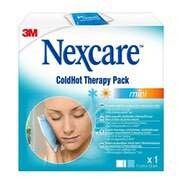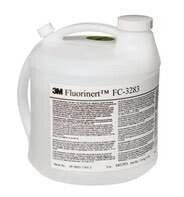Acrylic adhesive for seals


Sealing seems to be an everyday activity until we see the rich and diverse range of sealants. From this universe full of adhesives, we will now become familiar with the possibilities of the acrylic adhesive.
Why exactly acrylic?
Acrylic adhesives are prepared with a chemical procedure that make them facilitate strong strength and quick adhesion. They are especially useful when joining work pieces of different surfaces, like plastic, aluminum, steel, and oily metal surfaces. Due to their structure, they better resist extreme weather conditions and they are resistant to impact and aging. Single- and bi-component types are also used. Compared to other adhesives made from silicone, their huge advantage is that they can be subsequently painted with any paint that will stick to the surfaces of sealants. To create a safer working environment, non-flammable products are also available; such acrylic adhesive is the bi-component 3M™ Scotch-Weld™ DP810, which is a more comfortable solution also due to its lower level of odor. A product with a similar name and purpose of use but with a different packaging is 3M™ Scotch-Weld™ DP810, Low-odor Acrylic Adhesive containing doses of 48.5 ml.
One of the most important tasks of structural adhesives similar to this one is to replace welding, screws, and screwing. Thus, they make work easier and they literally create more flexible procedures. While spot-welding requires skills and longer practice, they use of acrylic adhesives – such as grouting in the bathroom – requires only a little bit of dexterity and attention. The omission of screws has a number of advantages: load will be better distributed along the entire binding area, there is no need to drill holes and distort the surfaces, we can use lighter materials, while all this reduce the cost and time of work in addition to facilitating a unique design and better appearance.
Types of acrylic adhesives
While almost every acrylic structural adhesive on the market today contains the same material (active monomer), the end user actually has three big families with different properties to choose from:
- MMA (methyl methacrylate) acryl, which is characterized by excellent adhesion and resistance to impact, especially in case of metals. A strong odor and flammability are also the features of MMA.
- Low-odor acryl. It also has an excellent adhesion and impact resistance, especially in case of plastics. It has low odor and non-flammable.
- LSE acryl – worthy of its name – excellently adheres to plastics of low surface energy (LSE) (polyethylene, polypropylene, thermoplastic olefin (TPO) and PTFE).
The use of acryl
According to experts, the use of acrylic sealant shall be primarily restricted to indoor use. Around fifteen minutes after its application, water evaporates from its material (and it seems that its mass collapses a bit at the grout), and a protective layer is created on the surface where we applied it. This thin film ensures protection against heat and UV radiation. Since acryl preserves its flexibility for a long time, and it can be even sanded – it is ideal to fill cracks with it that are slightly deformed because it easily fills them and it can even reach places and cracks that other materials cannot.
By the way, cracks: in case of acryl, you have to look for less expanding gaps, for example, flexible parquet grout can be perfectly used to fill the cracks of parquet and floorings: they do not fall out from the flooring, they resist well the demanding use of the flooring and parquet, and they can be used independently from varnishing – even before or after that. The acryl put into the cracks from the injection gun can sometimes flow to the wrong place but this can easily be cleaned or put into the correct place with an appropriate tool.
The question may arise: how much time do you need for acryl to solidify? Based on experience, this depends on temperature and humidity. It is worth keeping in mind that acrylic adhesive is usually recommended to use around between 5-35°C.
Types of acrylic adhesives
Knowing the purpose and location of use, we have several types available to choose from.
Liquid acrylic adhesives are rather common, and they can be applied either with a brush or with a moist cloth. Tools used to apply the adhesive must be thoroughly cleaned before and after each use. Liquid acrylic adhesives are commonly used in upholstery, decoration, and carpentry.
Acrylic adhesives are most common available in the form of cream, and they can be squeezed from an adhesive gun or they can be spread onto the material with a brush. Acrylic adhesive cremes can be used practically for any purpose, but they are most frequently applied onto wooden, glass, metal, and waterproof objects. In addition to this, acrylic adhesive cremes work very well even with liquid acrylic adhesives, and they are usually used together to “sandwich” two objects.
In addition to liquids and pastes, another form of acrylic adhesives is tapes. This form is often used for clothes and for purposes related to other types of fabrics. Tapes can be one- or two-sided.
Here we can find them
Due to their good product properties, acrylic adhesives can be found in an amazingly high number of places; their usage is almost universal.
Although – as we have mentioned – they are rather recommended for indoor use, some types of acrylic adhesives are doing well also outdoors. If, for example, the aim is to bind billboards, various signs – typically thin materials, like prepared or unprepared metals, plastics –, then we are immediately in place and we can forget about mechanical fixing that is not even possible to implement everywhere.
The production of various sports tools, like golf clubs or soccer goal nets, includes the adhesion of strong solid materials, like aluminum and steel. During use, these binds are subject to extreme stress and wear. This is the reason why acrylic adhesives are good for such purposes, because they provide a high resistance to impact, they easily bind these materials, and any small but complex component can be attached to sports tools without limitations.
It says a lot about the role of acryl that they have an essential role also in the production of airplanes, which is a field full of extremely intensive forces – they are used for the adhesion of external components. In everyday life, it is often used also in the building industry, for example to join and seal window frames, because the phrase “gone with the wind” can be excluded in case of acryl.
More articles
Flanker Plusz Kft.
Contact Details
Boti Street, 100.




























